After several seasons of reporting (by various authors) on interesting mushrooms that pop up around Paluma each season, I would have thought there would be fewer new varieties to report on this year, but so far my mushrooming efforts have not suffered the fate of diminishing returns.
Here is a selection of some of my new finds this year.
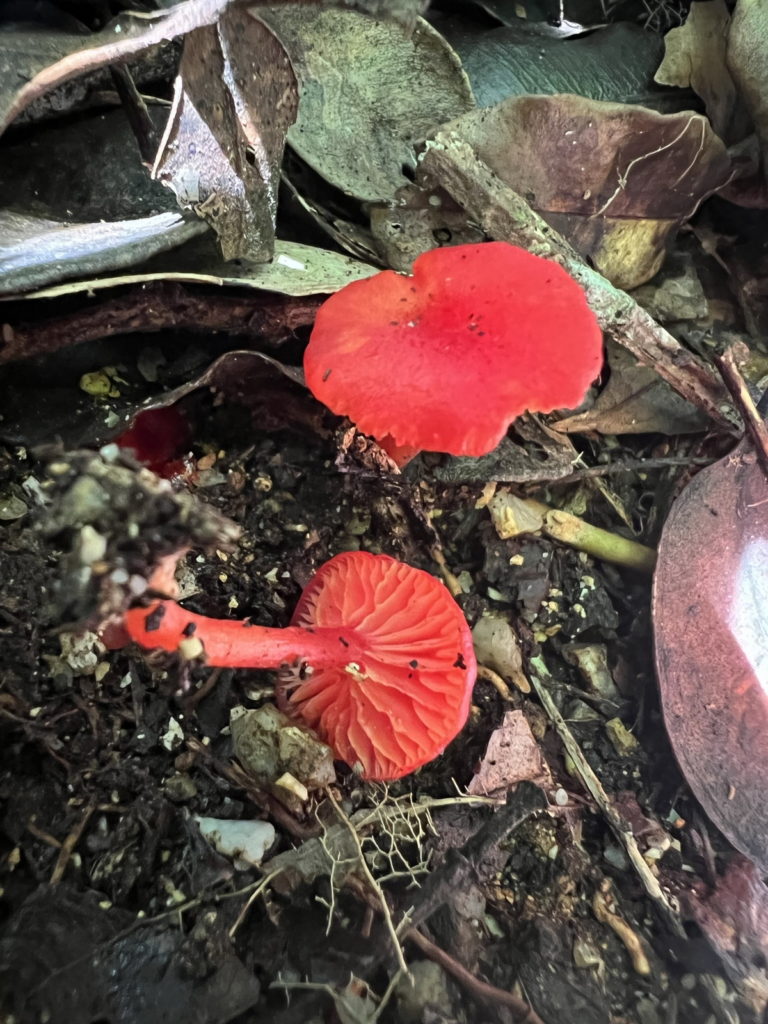
Every year with out fail one of the more common mushrooms along the rainforest tracks is the small Vermillion waxcaps (Hygrocybe sp – possibly H. miniata). I have published pictures of these before. But there are other beautiful red species that can be found if you look carefully. One of my favourites is the tiny Redbonnet, with a delicate shiny viscous cap and slender stem. Often overlooked because of its size, it is common in many gardens as well as along the tracks.
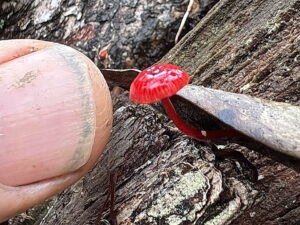
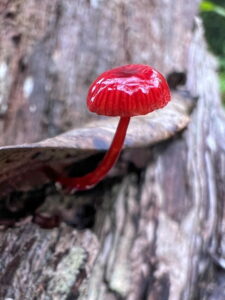
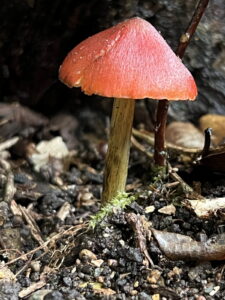
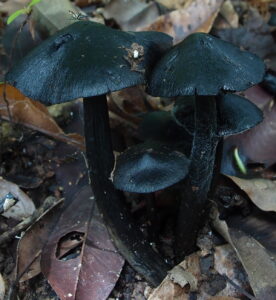
Another less common but striking red mushroom is the Blackening waxcap (Hygrocybe astatogala). It gets its common name from the fact that it turns increasingly black with age. The bottom left hand photo is a fairly fresh specimen found by Juanita at McClelland’s lookout, with a stem showing faint black streaks. After a few days it can turn entirely jet black as shown in the adjacent image by Ray Palmer from a specimen near Cairns. Both phases are strikingly beautiful.
Some other classic gilled mushrooms (Agarics) I’ve found in the last few weeks are shown below. The orange Gymnopilis was growing on a log in my garden, while the unusual burnt yellow mushroom (Oudemansiella flavo-olivacea) was growing on the roadside next to the High Ropes Course. The last mushroom in this group is an Amanita found in the Banksi/Casuarina forest near Witts Lookout.


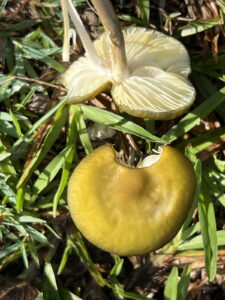


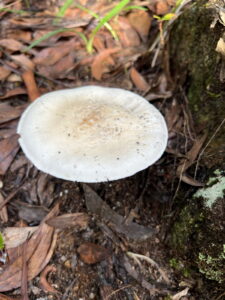
Middle row: Oudemansiella flavo-olivacea.
Bottom Row: Amanita sp. (section Roanokenses)
The last two fungi for this article both share the common name coral fungi based on their shape, which is similar to some corals, but they are not in any way related. The large white bushy specimen is Artomyces sp growing on a log behind Potters Park. It belongs to the order Russulales along with the very different False Turkey tail (Stereum ostrea) that I have previously written about in the 5 easy species series. The red club-shaped fungi is Clavulinopsis sp (probably the sulcata group) which is in the family Clavariaceae in the order Agaricales, which is the group that contains mostly gilled fungi.

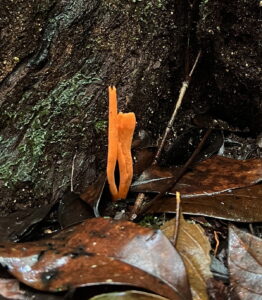
If you come across any interesting Fungi that you would like to identify I would be happy to give it a try, or refer it back to some of the facebook experts that have helped me for this article. Just take a picture from the top and side, as well as one of the underside of the cap. I am sure that there are dozens more spectacular fungi to be found around Paluma and it would be great to share them with others through this website.
Text and photos (unless indicated) by Jamie Oliver
